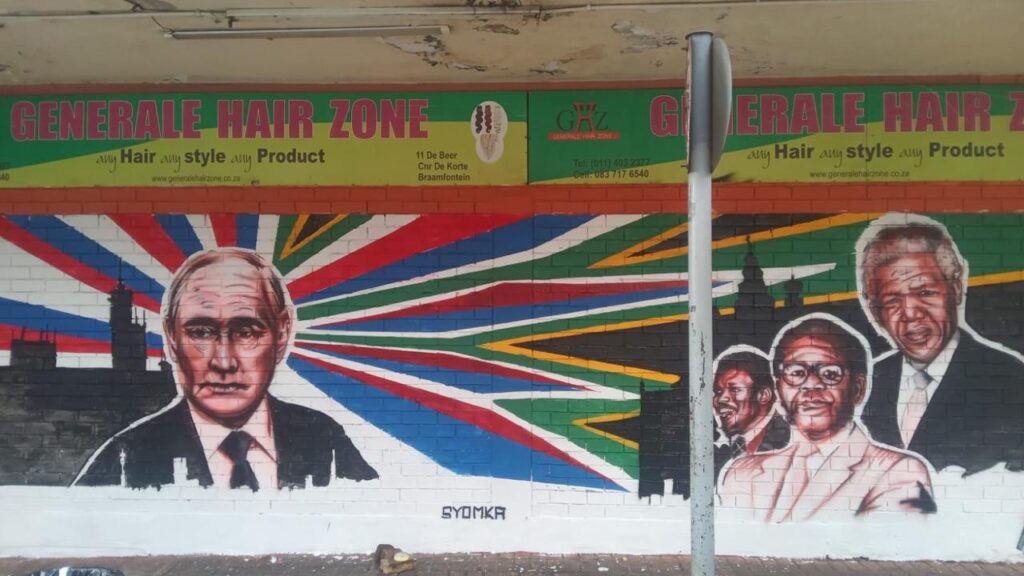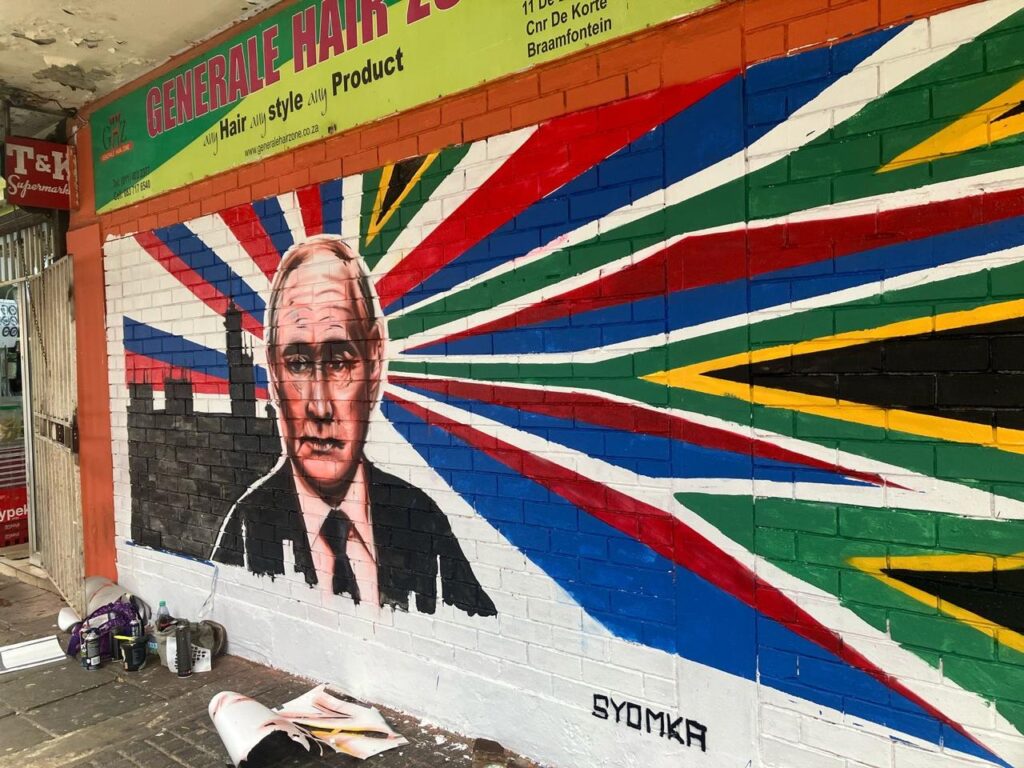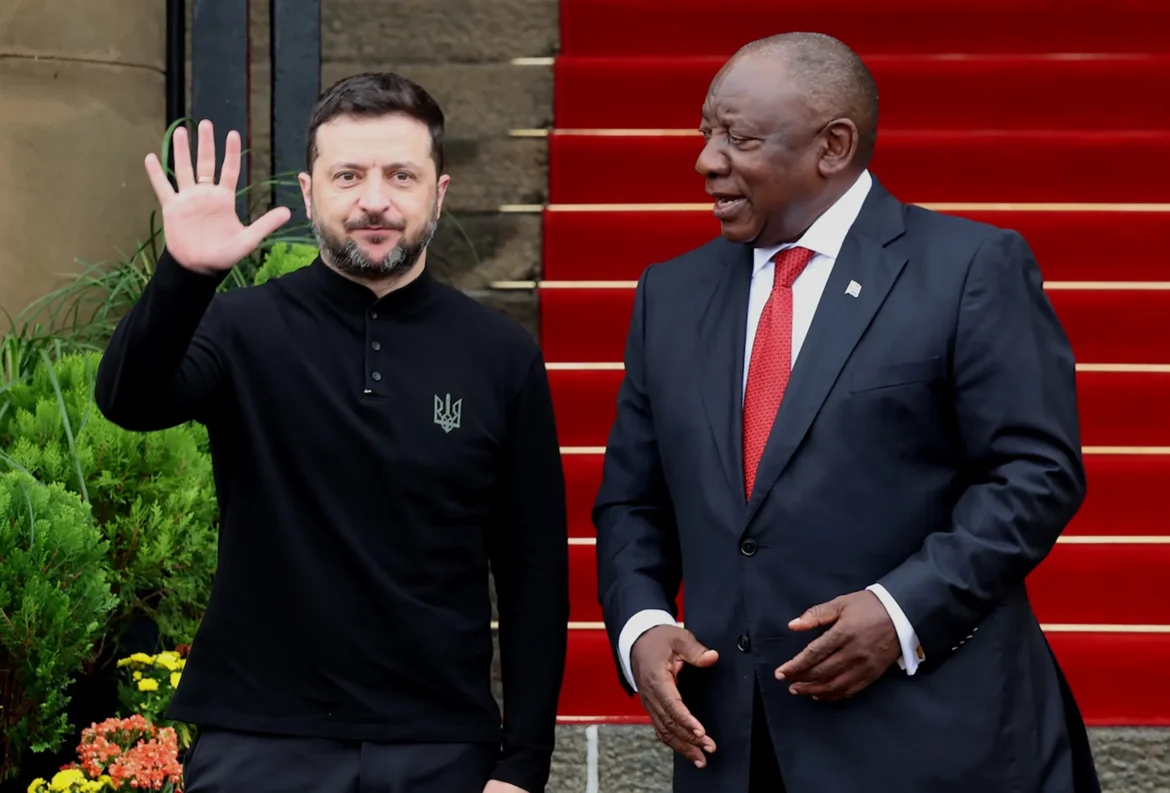South Africa — In a striking moment of public expression, a mural of Russian President Vladimir Putin was unveiled by local artists during Ukrainian President Volodymyr Zelenskyy’s diplomatic visit to South Africa — a gesture that has sparked debate and drawn global attention.

The mural, painted prominently in a public space, has raised eyebrows and questions alike. Is it simply an artistic statement? Or does it reflect a deeper sentiment among segments of the South African public?
Zelenskyy’s visit, aimed at fostering ties with African nations and discussing global cooperation, was met with mixed reactions. While some welcomed him as a symbol of resilience, others took the opportunity to voice contrasting views — through protests, placards, and now, through paint.

“This isn’t just street art — it’s a political message,” said a bystander. “It tells the world where some South Africans stand, or at least who they feel has been heard and who hasn’t.”
South Africa has maintained a neutral stance on the Russia-Ukraine conflict, opting not to align itself directly with either side. But the appearance of the mural during Zelenskyy’s visit adds a layer of complexity to that position, raising questions about how neutrality is expressed — and interpreted — by the public.
Whether it’s viewed as a form of admiration, defiance, or political critique, one thing is clear: the mural has become more than just an image. It has sparked a conversation about where sympathies lie, and how art can sometimes say what words cannot.
